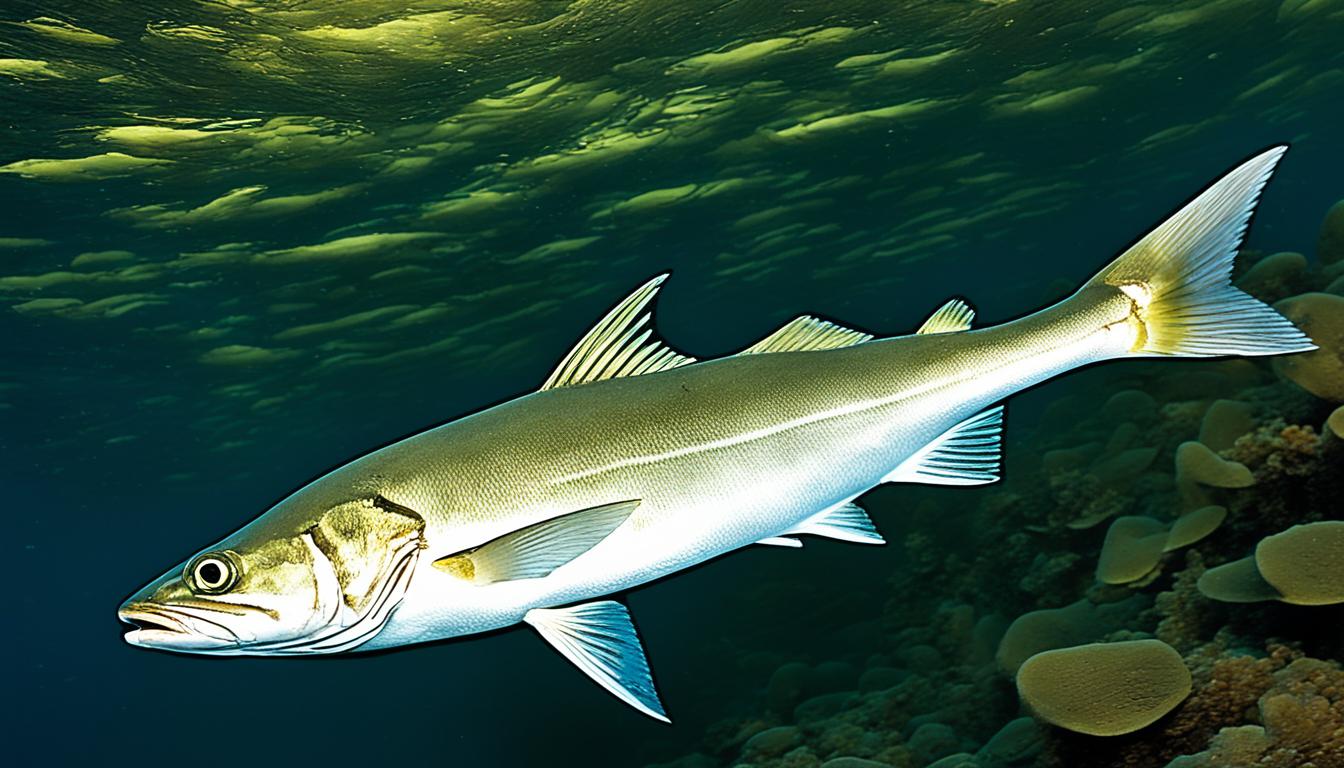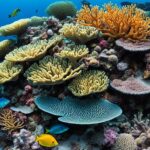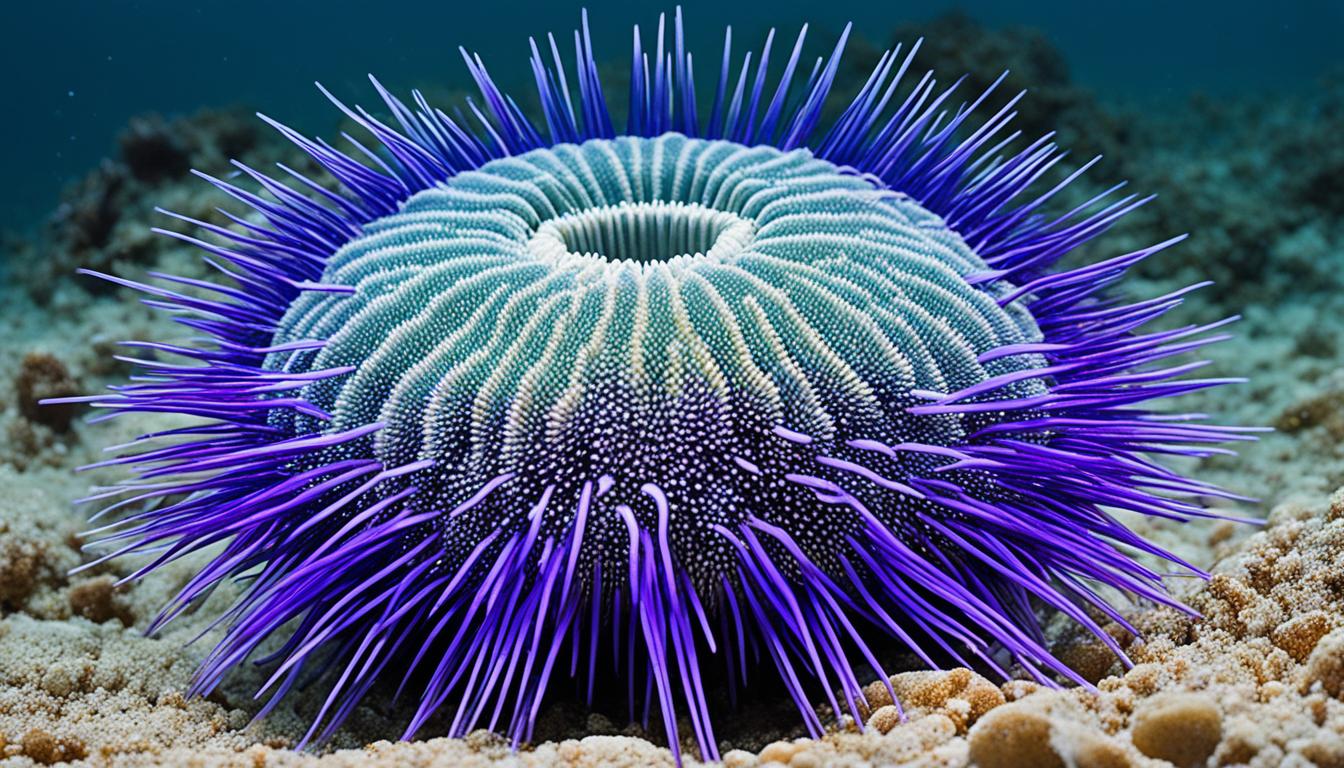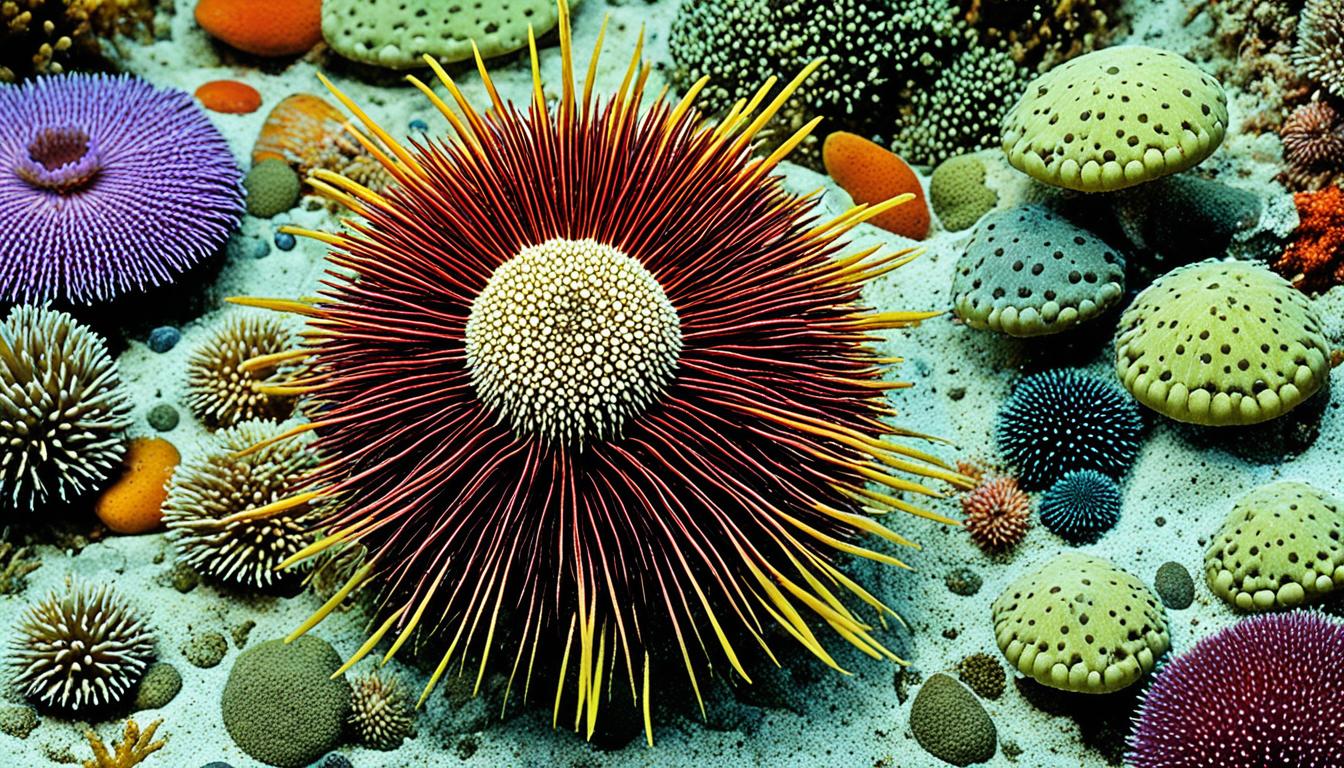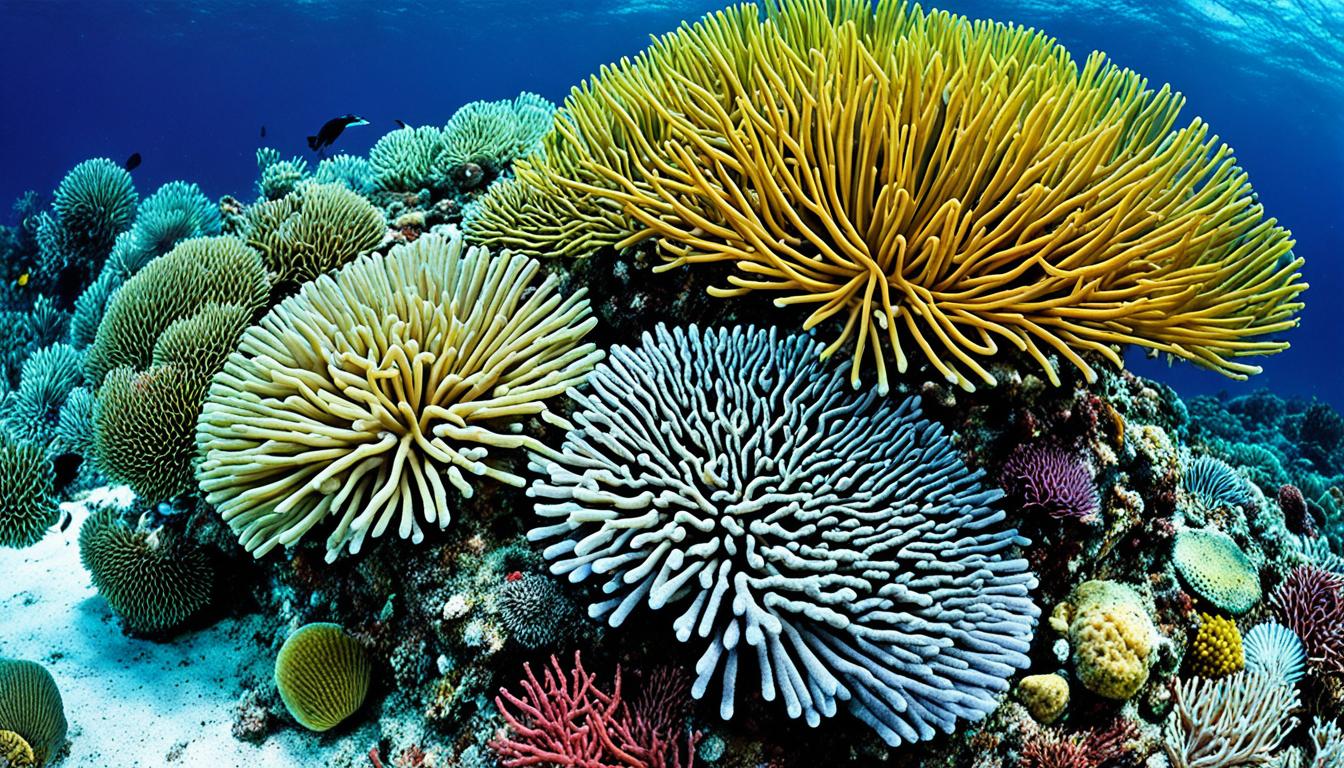Haddock adapt to their environment in amazing ways. These fish live mainly in the North Atlantic Ocean. They have special traits that help them survive. These traits include their looks and how they act.
These adaptations help haddock deal with dangers like predators and changes in the ocean. In this article, we’ll look at how haddock change their behavior and body to live in different marine places.
Haddock Characteristics and Habitat Preferences
The haddock is a fascinating fish with unique traits and specific living spaces. These traits are crucial for its survival and growth. Knowing about them helps us understand how they live in their natural world.
Physical Appearance and Identification
The haddock stands out with its sleek body. It has a dark purplish-gray top and a silvery-gray bottom with a touch of pink. It’s easy to spot because of a black line along its side and a dark mark above the pectoral fin called the “Devil’s thumbprint.” Adults can grow from 38 to 69 centimeters long and weigh 0.9 to 1.8 kilograms.
Preferred Environmental Conditions
Haddocks live in various places but love depths of 40 to 300 meters (131 to 980 feet). They prefer water that’s between 2 to 10 °C (36 to 50 °F). Young haddocks stay in shallower waters, while adults go deeper.
They like living on hard, smooth surfaces like sand, gravel, and pebbles. They move with the seasons to find the best places for spawning and eating.
How do haddock adapt to their environment?
Haddock have amazing ways to survive in the ocean. They use a magnetic compass as young fish to find their way. This helps them move through the water to safe places.
As they grow, haddock get even better at adapting. Adults change where they eat and lay eggs based on the ocean’s changes. This helps them have successful reproduction and keep their numbers stable.
- Young haddock utilize a magnetic compass for navigation.
- Adults adapt to oceanographic changes.
- Shifts in feeding grounds enhance survival rates.
- Spawning behaviors adjust according to environmental cues.
Behavioral Adaptations of Haddock
Learning about haddock’s behavior helps us understand how they survive and reproduce. Their eating habits and how they spawn are key to their success in the ocean.
Feeding Habits and Diet
Haddock live on the ocean floor and eat small invertebrates like crabs, shrimps, clams, and worms. They can change their diet based on what’s available. This flexibility helps them survive.
Young haddock start with zooplankton after hatching. As they grow, they eat more marine organisms.
Spawning Behavior
Haddock spawn near the ocean floor from February to June, peaking in March and April. Female haddock lay 150,000 to 3 million eggs at once. This helps increase the chances of their young surviving.
But, only a few eggs make it to adulthood. This is because of predators and tough conditions early on.
Environmental Challenges Faced by Haddock
Haddock face many environmental challenges that affect their survival and numbers. It’s important to understand these challenges for conservation and keeping haddock fisheries healthy. Natural predators and ocean conditions are two big factors that impact their well-being.
Natural Predators and Survival
Many fish, like cod and pollock, prey on haddock, especially young ones. This hunting affects how many young haddock make it to adulthood. To avoid predators, haddock hide under things like jellyfish. This helps them stay safe when they are most vulnerable.
Impact of Oceanographic Conditions
Changes in ocean temperature, salinity, and currents can change where haddock live and what they eat. These changes affect their homes and where they can find food. When these things change, it can make it harder for haddock to reproduce and for their young to survive. Haddock need to adapt to these changes to keep their populations stable in fisheries.
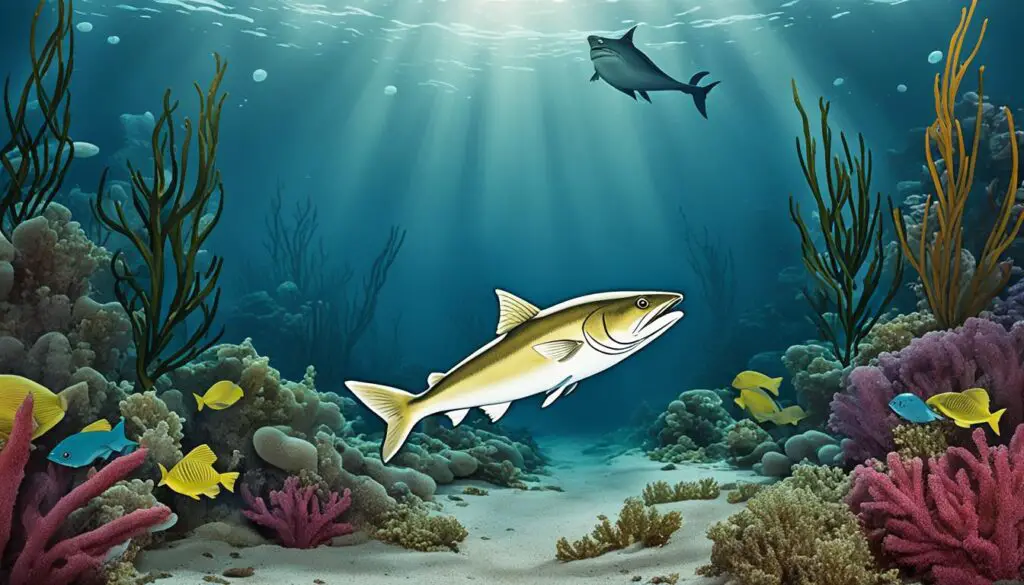
| Environmental Factor | Description | Effect on Haddock |
|---|---|---|
| Natural Predators | Cod, pollock, and silver hake preying on juvenile haddock | Reduced survival rates |
| Ocean Temperature | Variations influencing habitat suitability and food sources | Altered distribution and reproductive success |
| Salinity Changes | Impacting growth and health of haddock populations | Decreased larval survival |
| Current Patterns | Influencing food distribution and movement | Challenges in finding suitable habitats |
Ecosystem Interactions and Importance
Haddock play a big role in the ocean and help both marine life and human economies. They are important to the ocean’s health and our food supply. Their actions show how vital they are to the ocean and to us.
Role in the Marine Food Chain
Haddock are key to the ocean’s food web. They eat small sea creatures and help keep their numbers in check. Then, bigger animals like sharks and seals eat haddock, showing their big impact on the ocean.
This balance is crucial for keeping the ocean healthy and full of life. It’s all thanks to haddock ecosystem interactions.
Commercial Importance
Haddock are very important for the economy. They are a big deal in the North Atlantic fishing industry. They feed many people and help the global economy.
To keep haddock safe for the future, we need to manage them carefully. This way, we can enjoy their benefits without harming the ocean.
Research and Future Considerations
Studying haddock from egg to juvenile is key to understanding their life cycle. This research helps us see how factors affect their survival and growth. It’s important for managing fishery practices wisely.
It’s also crucial to look at how climate change and human actions like overfishing affect haddock. Changes in ocean temperatures and ecosystems impact their survival. We need strategies that balance the environment, economy, and ecology to help haddock adapt.
Thinking about the future of haddock means focusing on sustainable fishing and protecting their homes. As we learn more, we’ll develop better ways to keep haddock safe for the future. Using science in management policies will help haddock populations thrive.
FAQ
How do haddock adapt to their environment?
Haddock adapt by changing their bodies and behavior. They use a magnetic compass to find their way. They also change where they eat and lay eggs based on the ocean’s conditions.
What are the physical characteristics of haddock?
Haddock stand out with a black line along their side and a special mark above their fin called the “Devil’s thumbprint.” They have a dark back and a silvery-gray belly. They grow to be 38 to 69 centimeters long.
What environmental conditions do haddock prefer?
Haddock live best at depths of 40 to 300 meters. They like temperatures between 2 to 10 °C (36 to 50 °F). They prefer living on the ocean floor with hard surfaces like sand and pebbles.
What feeding habits do haddock exhibit?
Haddock live on the ocean floor and eat small invertebrates like crabs and worms. Young haddock eat zooplankton, and adults eat bigger sea creatures. They change their diet based on what’s available.
How do haddock spawn?
Haddock spawn on the ocean floor from February to June, mostly in March and April. A female can lay between 150,000 to 3 million eggs. They use mass spawning to help more larvae survive.
What are the natural predators of haddock?
Large fish like cod and pollock prey on haddock, especially the young ones. To avoid predators, haddock hide under things like jellyfish as larvae.
How do oceanographic conditions impact haddock?
Changes in ocean temperature, salinity, and currents affect where haddock live and what they eat. This can also impact their ability to reproduce and for their larvae to survive.
What role do haddock play in the marine food chain?
Haddock are key in the marine food web. They eat small invertebrates and are eaten by bigger fish and marine mammals. This helps keep the balance in the ocean.
Why are haddock commercially important?
Haddock are important in the North Atlantic fishing industry. They support local and global economies. It’s crucial to manage their fishing sustainably to protect the ocean and its life.
What ongoing research is being conducted on haddock?
Researchers are studying haddock from egg to juvenile stages. They’re looking at how climate change and overfishing affect them. This helps make better management plans for the future.

